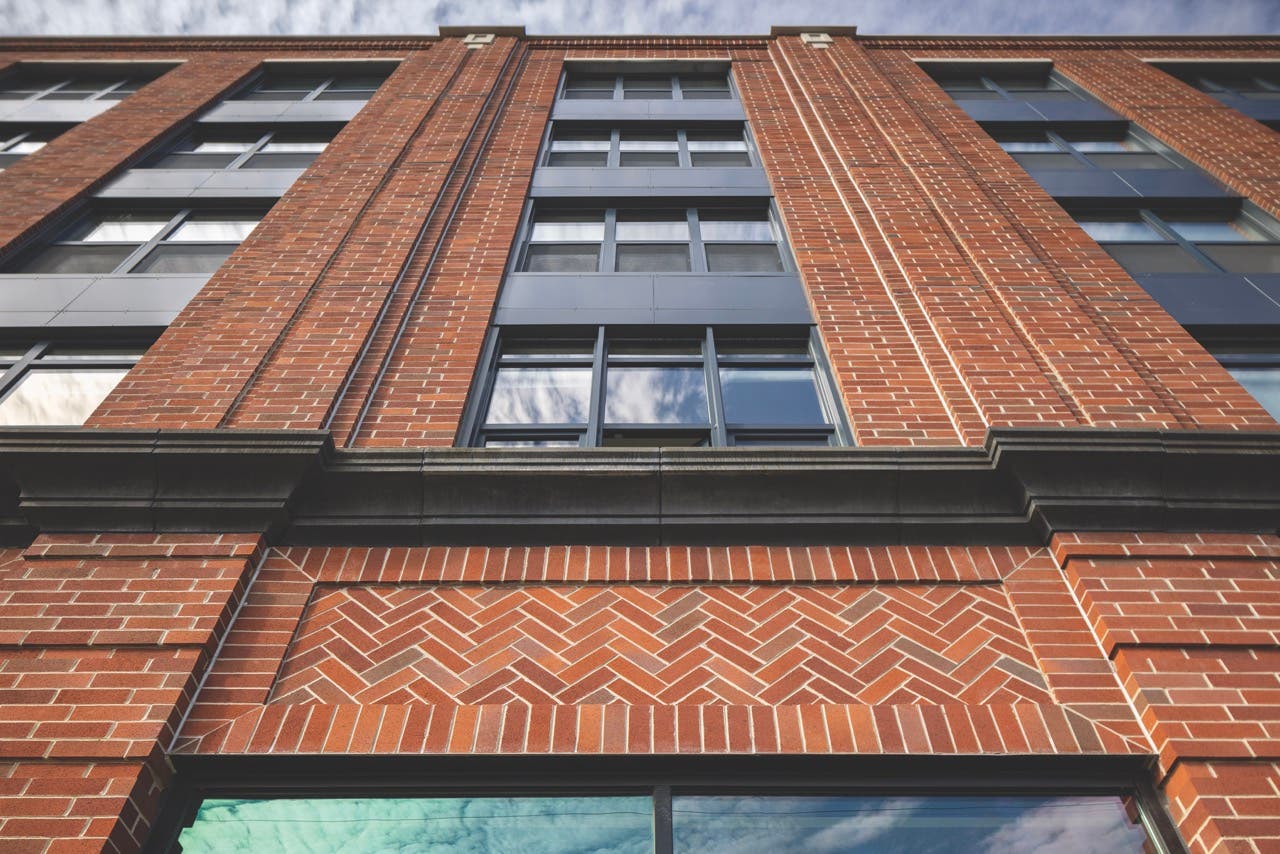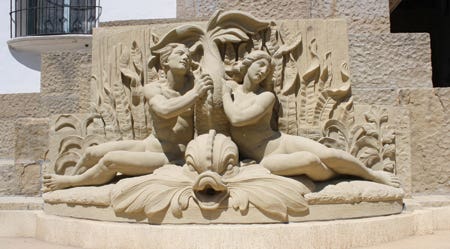
Product Reports
Recreating the Spirit of the Ocean Statue

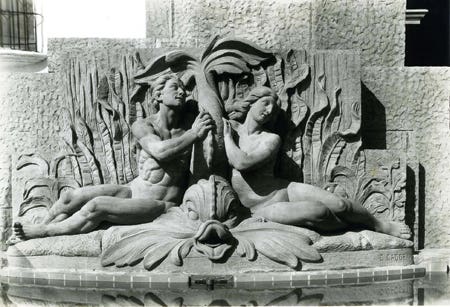
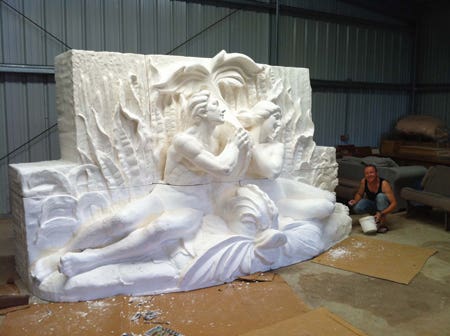
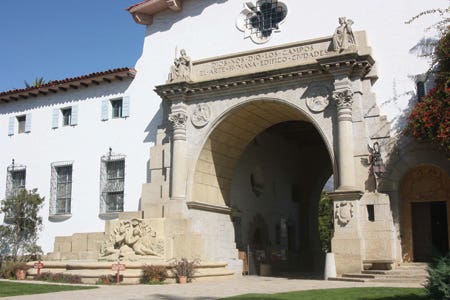
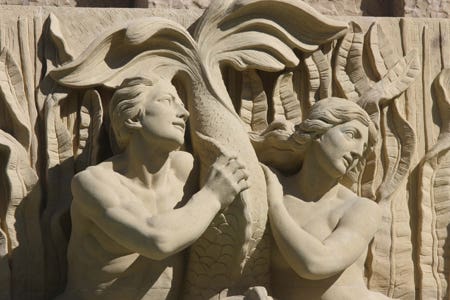
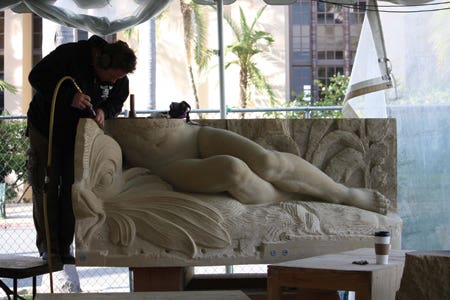
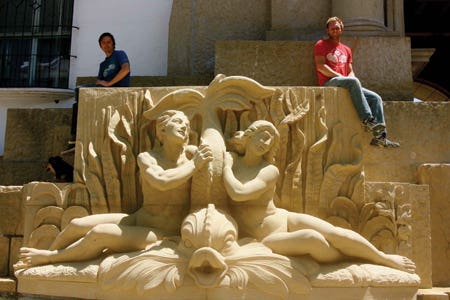
After the earthquake of 1925 destroyed Santa Barbara's downtown district, taking several hotels, the Sheffield Dam and the Greek Revival courthouse in its wake, Architect William Mooser III introduced the now pervasive Spanish Colonial style to the area. His design for the new palatial Moorish-Spanish courthouse, which occupies an entire block of downtown Santa Barbara, was initially met with local resistance. Now the celebrated site boasts 150,000 visitors annually and is considered one of the most beautiful government buildings in the country.
In 2005, it was designated a National Historic Landmark, prompting The Courthouse Legacy Foundation to undertake the task of preserving this Santa Barbara architectural icon. After rehabilitating the Hall of Records and restoring the Mudéjar ceiling in one of the two original courtrooms, the foundation turned its attention to the Spirit of the Ocean fountain at the main entrance to the courthouse.
The Spirit of the Ocean, an elegant sandstone carving of a supple-limbed man and woman on either side of a large, stylized dolphinfish, captures the essence of Santa Barbara's relationship to the ocean. But the beloved sculpture, originally carved in 1927 by Ettore Cadorin, had been decomposing for decades, losing more than 80 percent of its original form.
In an effort to save the sculpture from further water damage, pool paint was applied to the sandstone figures. Although the intention was to keep moisture out, for more than 50 years the acrylic material had actually sealed water in the sculpture, causing the surface of the sandstone to decay. In essence, this local gem was eroding from the inside out. The Courthouse Legacy Foundation came to the conclusion that provisional maintenance would no longer suffice: The piece had to be re-created.
Britishstoneworks, Hunt Studios and Melka Sculpture worked diligently on the front lawn of the Santa Barbara courthouse for seven months to re-create the Spirit of the Ocean. While bronze, marble or even cement would have been more durable than sandstone, due to historic preservation regulations, the new sculpture was expected to adhere as much as possible to Caldorin's original material, tools and process.
The original stone was located in Refugio Canyon but because a rare Californian frog had taken up residence in the same area, the restoration team decided to look elsewhere. As luck would have it, a harder, potentially more durable version of the same sandstone was located not far from the original location, at Slippery Rock Ranch – the site of the old 1800s stage coach route over the Santa Ynez Mountains.
The massive piece of stone was delivered by crane to the courthouse lawn. The dedicated team of skilled stone carvers, who recently received a 2011 Pinnacle Award for restoration from the Marble Institute of America, then began removing approximately 35 tons of stone to create the replica Spirit of the Ocean.
A 3-D laser scanning system determined the exact measurements of the carving, and then a foam model was created. The sculptors then carved the five pieces of stone, creating a statue measuring about 14-ft. wide x 7-ft. deep and 8-ft. tall, utilizing the pointing method, an 18th-century method of reproduction using a point mapping tool.
While the professional carvers were highly accomplished, having worked on projects such as Westminister Abbey, Salisbury Cathedral and the Princess Diana Memorial to name a few, this project was challenging. The sandstone blocks were larger than those the sculptors had previously worked with, and Cardorin's style, inspired by the late 19th-century Lebensreform movement, was difficult to emulate. The muscles and facial features of the original figures were more pronounced than those of a typical Classical statue, yet such "looseness" is difficult to achieve in a replica. After practicing on a number of spare pieces, the stone carvers achieved the final finish by cutting the form with hand-made tools and using techniques they had developed to give texture to the surface.
Working six days a week under an event tent, in broad daylight, the carvers quickly became something of a tourist attraction. Not only did they show passers-by what they were doing, but they also showed them how, turning the makeshift studio into something resembling a class. The team also gave tours to local organizations and docents to the Santa Barbara Museum and Courthouse. Interest from the public was a particularly positive aspect of the experience, given the current demand for modern, simple architecture and the diminishing number of skilled professionals in the stone-carving field. The collaborative expertise, skill and effort of Nathan Hunt, Nick Blatern and Andrian Melka gave the Spirit of the Ocean back to the community.
The architecture of Santa Barbara continues to reflect the history of its inhabitants, including the native Chumash Indians, the arrival of the Spaniards in the 17th century, and the influence of the Franciscan monks. Between the 18th century and the middle of the 19th century, Santa Barbara saw a proliferation of stone construction, turning the once dusty seaside enclave into a city with promise and permanence. To ensure the enduring presence of the sculpture, the new Spirit of the Ocean fountain will be kept under the close eye of the Courthouse Docent Council. TB








